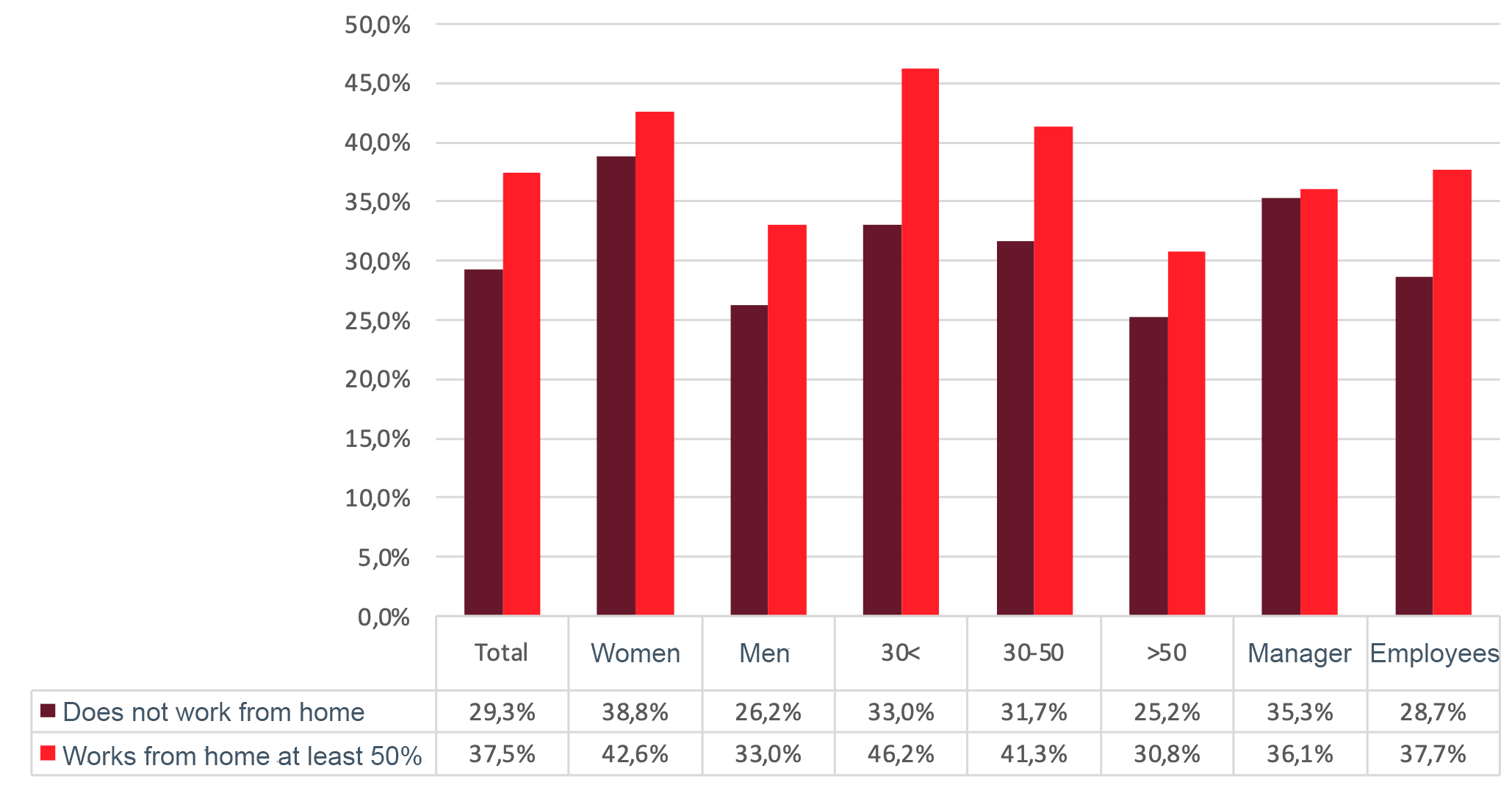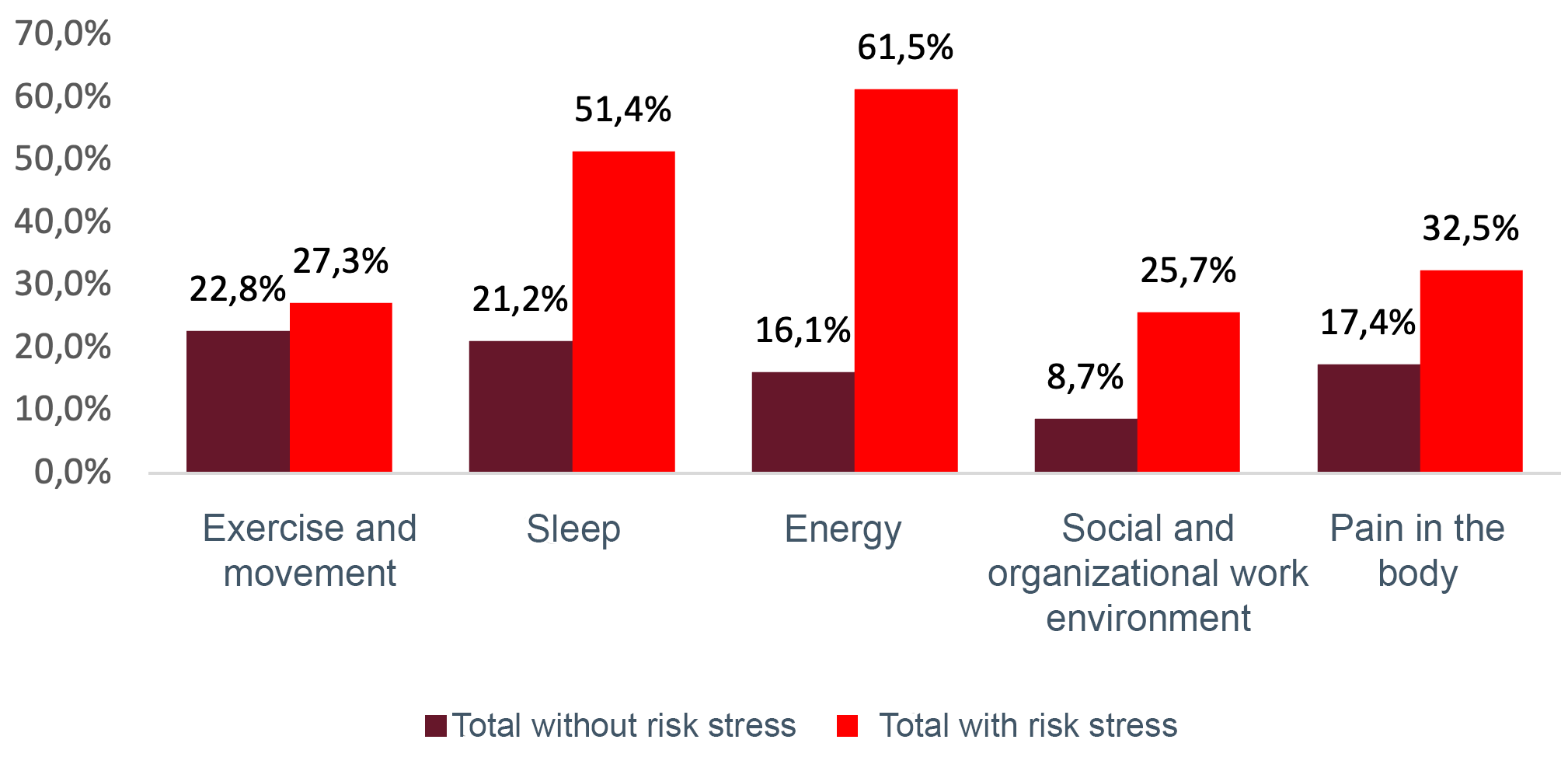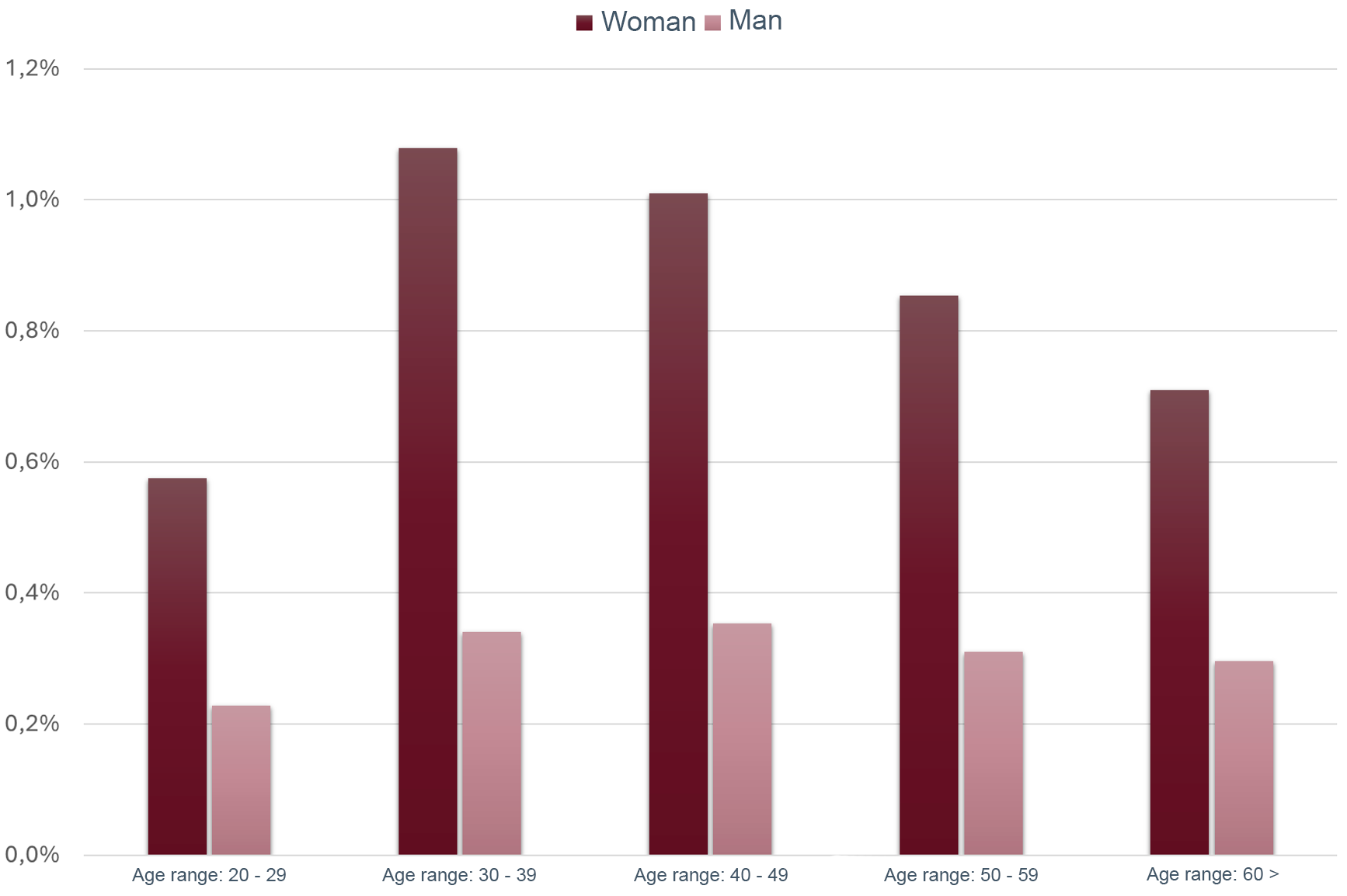Press release
A third stressed at risk level – higher stress among those who work from home
2025-02-03: A third experience stress at a risk level. Women report higher stress levels and are more often on sick leave due to stress and psychosocial issues, and have a higher frequency of repeated short-term absences. This is shown in a new report from Falck. The report also highlights the connection between stress and lifestyle factors, where employees with high stress also report poorer sleep, less physical activity, and more body pain. Additionally, it appears that remote work is associated with higher stress levels.
Falck's new report, Stress in working life, is based on more than 25,000 health and work environment profiles, sickness statistics from 150,000 employees and data from our deliveries of health and work environment services.
The report shows that a third experience stress at risk level, women are more affected than men.

"Unhealthy stress is a major challenge, and employers need to investigate the underlying causes more closely and work to create a work environment that promotes health. We can see that women both experience higher stress and are more often on sick leave due to mental illness, this needs to be taken seriously. At the same time, we know that men are less likely to seek help for mental illness, which means that there may be a dark number," says Maria Steneskog Nyman, psychologist and head of Falck Sjuk och Frisk.
The highest stress levels are reported by women under 30 years old. A total of 45.5 percent of women under 30 report stress at a risk level, of which almost 17 percent report stress levels at high risk. Women between 30-50 years report almost equally high stress levels. Men over 50 years report the lowest stress levels.

“It is important to support young employees who are new to the work life and who early on show signs of stress-related ill health. This can involve extra support and follow-up when newly employed, mentorship, and close communication with the manager. But also to support young employees in their expectations to be able to take self-leadership in health and their own needs to be sustainable in the work life,” says Åsa Miemois, health developer at Falck.
Many organizations have transitioned to hybrid working methods, where work can be performed both on-site and remotely. Hybrid and remote work increase flexibility but also require creating good conditions for the physical and psychological work environment. Those who work more than half the time from home report stress at a risk level to a greater extent. Among those under 30 years old who work from home more than half the time, 46.2 percent report stress at a risk level.

“Hybrid and remote work are now a given in many industries. Flexibility increases, but it also places new demands on structures, meeting formats, and leadership. The opportunity for social interaction and collegial exchange risks decreasing when we see each other less at the workplace,” says Lena-Karin Allinger, organizational consultant at Falck.
The report also shows how stress and other lifestyle factors interact. Individuals with high stress levels tend to also sleep worse, exercise less, and experience lower energy levels. They also perceive their work environment as worse and more often have problems with body pain.

“Stress has become an increasingly common cause of sick leave, and the workplace's demands, culture, and organization play a significant role. It requires active work focusing on organizational factors combined with individual adjustments. Companies and organizations need to focus on creating a health-promoting work environment, where support, recovery, and balance are also prioritized,” says Lena-Karin Allinger, organizational consultant at Falck.
Sick leave is often due to a combination of increased work demands, higher stress levels, and difficulties in balancing work and private life. Women under 30 years old are those who most experience high stress and psychosocial issues, but when we look at those who end up on long-term sick leave for this problem, it is women over 30 years old who are most affected.

“To reduce the risk of long-term sick leave, it helps to have systems in place to catch early signs of ill health and to continuously monitor individuals' well-being and job satisfaction. A sustainable workplace promotes both performance and health,” says Maria Steneskog Nyman, licensed psychologist and head of Falck Sick and Healthy.
Understanding the causes of stress, its effects, and which groups are most vulnerable is crucial for creating healthy, sustainable workplaces and simultaneously preventing sick leave related to stress-related issues.
“Experiencing stress is a natural part of life, and having shorter periods of stress is not dangerous in itself. However, if I am under prolonged stress and do not have the opportunity to recover, it can have negative consequences,” says Åsa Miemois, health developer at Falck.
About the report Stress in working life
The report "Stress in work life" is based on over 25,000 health and work environment profiles conducted from January to December 2024. Falck's health and work environment profiles map out lifestyle habits, musculoskeletal issues, well-being, and the social and organizational work environment. It is a type of health examination that provides an overview of how lifestyle habits, physical issues, fitness, and work environment affect well-being.
The health and work environment profile provides a broad health perspective with a focus on what can improve health for the employee and the organization. Each individual who completes a health and work environment profile rates themselves in various areas and receives feedback on whether they are at a red, yellow, or green level, where green indicates no risk, yellow indicates some risk, and red indicates high risk. In this report, we focus on stress but have also conducted several cross-readings between stress and other health and lifestyle areas.
The report is also based on sick leave statistics from approximately 155,000 individuals and data from our deliveries of health and work environment services. By combining these sources, we can obtain a broad and detailed picture of stress issues in work life.
Falck continuously publishes reports and statistics on various challenges in work life. This report follows up on the report "Stress in work life" that we released in the spring of 2023.
About Falck
With 1,000 experts at nearly 100 units across the country, Falck is Sweden's most comprehensive provider of health and work life services. We offer occupational health care, crisis and employee support, transition and career services, as well as primary care and health services for private individuals. Our health and work life services reach 2 million people across Sweden and contribute to a sustainable work life and private life for everyone.
Read more on falcksverige.se
For more information, please contact
Peter Skald, Head of Communications
+46 (0)70 413 08 13
peter.skald@falcksverige.se
Sandra Ahlstrand, Communications Specialist
+46 (0)70 635 89 62
sandra.ahlstrand@falcksverige.se